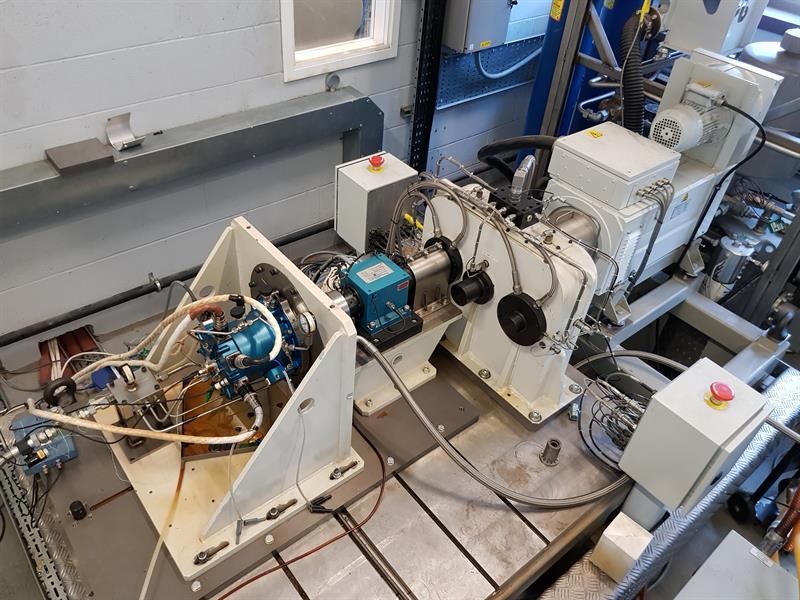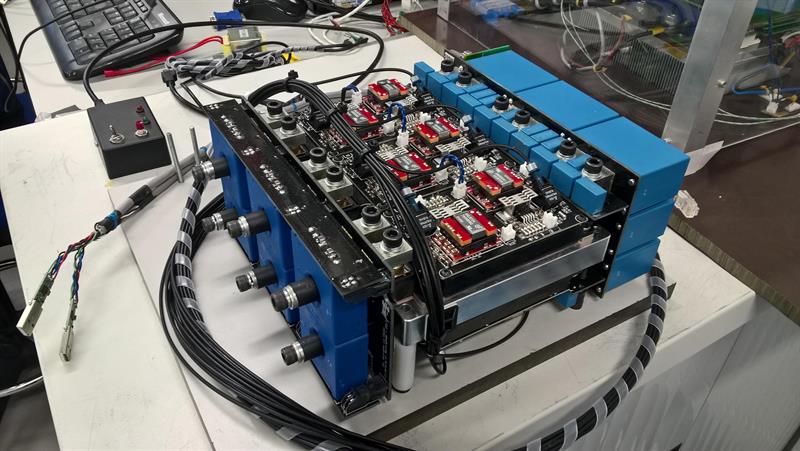In recent years every sector of the economy has seen a move towards cleaner and more efficient forms of production and delivery. When it comes to aviation, however, it has been the fastest rising source of carbon emissions over the past ten years, despite the development of more efficient and cleaner aircraft.
Air travel is rapidly coming under the spotlight for its pollution footprint and, for the first time, an airline recently made the top 10 list of Europe’s largest carbon emitters.
According to figures from the European Union, the aviation industry contributes around 3 per cent of the EU’s total greenhouse gas emissions and, with demand from new markets like China and India accelerating, the environmental impact, at least prior to the Covid-19 crisis, was expected to increase significantly.
As a result, this global rise in CO2 emissions has led to calls for the faster de-carbonisation of the sector.
In Europe, the move to greener aviation has seen a number of projects set up to deliver new solutions. The Advisory Council for Aeronautics Research in Europe, whose members include Rolls-Royce and Airbus, has set itself some challenging environmental goals through its Flightpath 2050 initiative, which is looking to achieve a 75 per cent reduction in CO2 emissions per passenger.
Many see the Covid-19 epidemic as an opportunity to completely change the aviation industry and its relationship with the environment.
As the airline industry has called for government support many analysts, environmental campaigners and industry insiders argue that any rescue package should come with green strings attached.
For industry critics, if airlines do receive significant financial support, they should no longer be treated as profit-seeking independent companies. Rather, in return for any public funding, they should be required to focus on reducing their environmental impact.
According to John Holland-Kaye, the CEO at Heathrow, the UK should take the current crisis as an opportunity to, “accelerate the decarbonisation of aviation by helping to scale up new energy sources.”
Role of engineering
Engineering has long been involved in exploiting new opportunities in the aviation sector, and when it comes to the development of greener and more efficient aircraft there is a ‘real sense of purpose’, according to the engineers involved.
Electrification of aircraft has been a focus for many years but that research has not been on propulsion but rather on power for on-board systems such as actuation systems, cabin pressurisation, wing de-icing, and electric ground taxiing.
Both the Airbus A350 and Boeing’s 787 have increased the use of electric power to power on-board systems, and the 787 also uses power generated from engine installed generators.
There is also a growing interest in hybrid options, which are seen as laying the groundwork for fully electric propulsion systems.
A good example is the E-Fab X project, involving Siemens, Rolls-Royce and Airbus which has raised the prospect of radically changing aircraft design and the development of all electric short-haul planes.
From a technological perspective the challenges associated with the electrification of propulsion are huge, and require investment across the whole ecosystem.
It will require fundamental research, notably into the development of electrical power systems which can operate at kilovolt levels; electrical machines and power converters able to deliver megawatts at a fraction of the weight of current state-of-the-art technologies; denser batteries and alternative fuels that will be able to store more energy.
To be able to deliver electrical propulsion, components will have to operate at significantly higher power densities and efficiencies compared to existing technologies, and they will be required to operate within high voltage distribution networks.
Hybrid-powered solutions, which bring together gas turbine and electrical generators, are being developed and are likely to deliver real environmental and cost benefits, while providing a route towards electric propulsion motors.
A big issue here, however, is the reliance on unproven power distribution systems and the need for high power electric motors.
In response, Siemens has developed a 50kg electric motor using a hybrid-electric propulsion system, which is capable of delivering continuous output of 260kw, which is five times better than comparable conventional systems – these are small, but not insignificant steps.
These projects are all looking to address the key problem when it comes to electrification, which is power to weight ratios.
In truth, many involved in the push for electric propulsion believe that it wont be until the 2030s, at the earliest, that the necessary battery technology will become available and it’ll be the 2040s before we see the integration of this technology into actual aircraft designs.
Not only are there technological challenges to overcome, but electrification will also need new manufacturing processes, supply chains and standards.

Above: High power density aircraft generator enabling the move to electrification
Among those experts involved in this work is Chris Gerada, Professor of Electrical Machines at the University of Nottingham, which is part of the UK Aerospace Research Consortium (UK-ARC) that’s aligned to the Aerospace Technology Institute’s four technology pillars: Aircraft of the Future; Future Propulsion; Smart, Connected and Electric Aircraft of the Future; and Aero Structures of the Future.
Professor Gerada’s expertise is in aircraft electrification – especially all-electric and hybrid propulsion and the technical challenges these present – and Nottingham university has a 400-strong team of researchers playing key roles across a number of R&D programmes.
As part of UK-ARC, which was set up in 2018 with the aim of advancing UK aerospace research through much greater university collaboration, Nottingham plays a leading role in research into aerospace technology and has a close working relationship with Rolls-Royce.
“While we have a reputation for high quality research, the UK has struggled with limited co-ordination in terms of research and a lack of suitable facilities,” explains Professor Gerada, “there was no real co-ordination at a strategic or national level in the UK, unlike in the US, Germany and France.
“We needed a much stronger ecosystem - one that brings universities and companies together - and while UK-ARC doesn’t define what research is carried out, it does now provide that platform for much greater co-ordination.”
At Nottingham research is focused on five areas: transmissions; manufacturing, electrical systems; future propulsion and future operations.
“My area of expertise is the electrification of aircraft and it’s been an on-going area of research over many years - in particular the electrification of non-propulsive systems of existing and near-future aircraft platforms, but today there is an acceleration in work into electrification in terms of propulsion,” says Professor Gerada.
Speaking before the impact of Covid-19 on the aviation industry became apparent, he added that, “a growing number of stakeholders including large, regional and small aircraft manufacturers, system integrators, engine manufacturers, electrical component and systems suppliers, regulatory and certification bodies, technology institutes and universities are now focused on the electrification of propulsion which is seen as fundamental in meeting future aviation emission targets and the demand for alternative mobility modes.”
According to Professor Gerada, when it comes to electrical systems the biggest challenges are that they are far less reliable and tend to fail more often, while they also tend to be heavy.

Above: Innovative high frequency converter that utilises Silicon Carbide technology
“The industry has been pretty successful in delivering improvements and addressing these problems, so we are seeing more electrical systems being deployed throughout modern aircraft. That success has been achieved by better understanding the technology, designing for more fault tolerance, designing in resilience and, underpinning all of this, improving thermal management. We’ve also got a better understanding of the physics of failure and how to mitigate it.”
Despite progress there are still safety considerations when it comes to electrical systems, from wiring routes to electrical interference.
Professor Gerada makes the point that when it comes to propulsion engineers will have to address problems that involve megawatts of power, not just kilowatts.
Design freedom
An additional benefit associated with the electrification of propulsion will be greater design freedom, which will be brought about by the ability to distribute propulsors across the aircraft. Batteries, unlike fuel, will retain a fixed mass during flight so in terms of wing design, for example, it should be possible to make them more aerodynamically efficient.
Another area that is seeing considerable development in terms of new aircraft design concepts is in autonomous electric vertical take-off and landing (eVTOL) vehicles, which are intended to compete with urban ground transportation.
“I need to make a distinction here,” says the professor. “While there’s a lot of work taking place with eVTOLs, as an area it is very different to when you start talking about commercial jets. The propulsion technology used in these devices is more like the tech you find in the automotive industry.”
Small platforms, such as these, have the advantage that the technology is relatively mature compared to high power electrical systems because it is translatable from automotive and existing aircraft electrification technologies.
“This space has seen a myriad of technologically advanced concepts. Whilst there is much improvement to be made from the technological aspect, the key barriers to successful deployment tend to be things like regulation, airspace management, public perception and successful business models to make them viable.”
By contrast the development of commercial jet electrical propulsion comes with innumerable technical challenges which, according to the professor, will range from the “evolutionary to the simply disruptive,” depending on the level of power and voltages needed.
A lot of research is focused on regional, or medium sized, aircraft which might be looking at powers in the megawatt (MW) range, while larger aircraft will require power in the tens of MWs.
“In terms of R&D these mid-range commercial aircraft, the sort that provides regional services and carry up to 150 passengers, is really exciting,” he acknowledges.
Aircraft electrification will impact existing supply chains and create new aerospace market segments, but it will also require new testing facilities and certification standards.
“There is a lack of infrastructure and facilities to test and demonstrate key electrical propulsion components, sub-systems and their integration into larger systems, especially at high power and voltage levels,” says Professor Gerada.
To help address this, the University of Nottingham is opening a Power Electronics and Machines Centre this year to test and develop MW-class electrical machines and power electronics.
“The facility will be one of the first non-proprietary platforms able to support the development and testing of electrical machines and power electronics systems for all-electric and hybrid electric aircraft platforms,” says the professor.
UK-ARC is also looking at establishing open, distributed test and development facilities that will be capable of serving the needs of the aerospace industry in this new era of electrified aerospace.
These kinds of facilities will be critical but they will only form part of the solution.
The challenges going forward when it comes to electric propulsion will include issues around integration – how will new technology integrate with legacy systems, design and infrastructure – and how will the industry support in-service operation?
The impact of Covid-19 means that business models are going to have to change and it is likely that too will impact on the supply chain and, in the longer term, on aircraft design.
Disruption is never the preferred option but it can bring opportunity, as companies develop and exploit new technologies.













